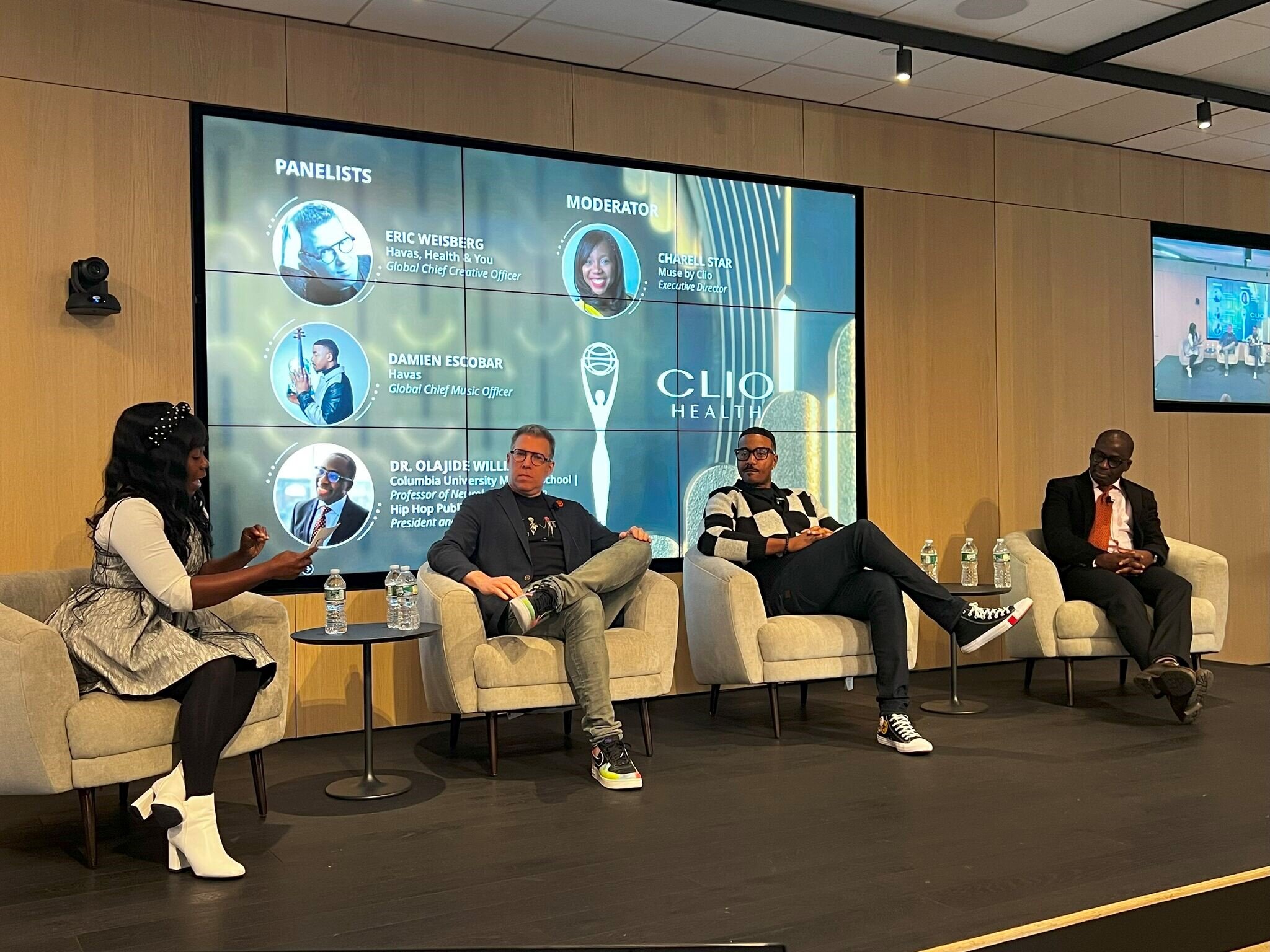Digital Transformation in Healthcare: How it Works
Many organizations focus on the approach or process elements of driving digital transformation. But we see greater opportunity in driving the mindset change that enables organizational change. In this way, organizations can not only streamline healthcare delivery - but improve it.
By investing in digital transformation, healthcare-based companies can transform the services they provide to patients, whether they specialize in pharma, consumer health, biopharma, or medical devices. Learn how below and discover the impact of digital transformation.
Digital transformation, explained
There are many definitions of digital transformation. At Oxford, we thinking of it as the integration of digital technologies and processes to drive fundamental organizational change. Digital transformation is made up of two parts:
Digitization — turning analog information into digital form, such as creating electronic health records (EHRs) from paper records, storing patient data in the cloud, and scanning paperwork and converting it into PDFs
Digitalization — using digital technologies to support organizational processes, such as investing in a new healthcare customer relationship management (CRM system), using artificial intelligence to streamline internal tasks, and using telemedicine to connect with patients in remote locations.
Digital transformation in healthcare can clearly benefit many external and internal stakeholders. But to drive focus, we would urge teams to align around one primary goal: to better serve the needs of patients. While transformation can also refine internal processes, the ability to optimize and in some cases revolutionize patient outcomes is central, through improving the speed of medical product delivery, healthcare quality and, ultimately, patient relationships.
How does digital transformation benefit patients?
Digital transformation for businesses supports patients in the following ways:
Drug Development Optimization
Big Data, small data, machine learning (ML), artificial intelligence (AI), statistical models, predictive analytics….all could potentially drive more effective and efficient analysis of biological and chemical data, streamlining the development process and addressing the bottlenecks. But how much is too much? The Big Data paradigm challenges how development teams can derive meaningful information from a potential mountain of data. In clinical trials data sets are often small and sparse – so organizations will need to combine the use of advances such as AI, with existing medical and scientific expertise.
Supply Chain Streamlining
It’s anticipated that artificial intelligence (AI), machine learning (ML) and predictive analytics will transform the healthcare supply chain in the near future. Deeper analytical decision making (for example by bringing together weather and order data) will lead to better predictive data. AI platforms can be used optimize inventory management and automation - bringing much needed agility to the healthcare supply chain.
Improve patient engagement
Healthcare digitalization has led to a boom in Patient Engagement (PE), driven by technological advances, the consumerization of healthcare and in part by a growing need for greater self-control of health, driven by the COVID-19 pandemic. In parallel, there has been growing focus (including studies) on the role that PE plays in improving health outcomes, compliance, patient accountability and even return on investment. Although there is significant investment in the role that digital plays in PE, particularly from pharmaceutical, biopharmaceutical and medical devices companies, PE is should be top of mind for all healthcare organizations.
“Around 10 years ago, we did a critical project with the UK Government, where the aim was to reduce childhood obesity. We applied our deep behavior change understanding to the Change 4 Life campaign and it’s one of the most meaningful pieces of work we’ve done. Today, it’s fantastic to see organizations like noom fusing their deep behavioral expertise in health that addresses biases, workarounds and habits with a brilliantly simple and effective tech-driven UX that really drives engagement” Lisa Davies, Oxford
Regulatorily agility
Innovation in health digitization will require parallel innovation in regulatory pathways. For example, the FDA does not currently regulate consumer health and wellness apps – estimated as a $US1.6BN global market (Sensor Tower, 2022). Instead, FDA approval and regulation is focused on software as a medical device (SaMD). Regulatory innovation has been running in parallel. Since 2019 the FDA has been running a pilot to drive more responsive evaluation, focusinf on developer excellence, review pathway determination, streamlined review, and real-world performance.
Telemedicine
Depending on the source, the telemedicine market is estimated to reach between $125BN (Precedence Research) and $US400BN (Fortune Business Insights) by 2027. Although not new, the COVID-19 pandemic coupled with technology maturation (IoT, 5G, AI, Big Data..) has sharply accelerated the acceptance and usage of telemedicine over the last few years. But it’s not just tele-triage, diagnosis or treatment between patient and HCP. Telemedicine now offers opportunities across the healthcare value chain, from consolidated ‘digital front doors’ to tele-surveillance and monitoring, fintech solutions for payment, reimbursement and financing, even tele-surgery.
Personalized healthcare
Predictive analytics provides a powerful way to identify health risks, improve outcomes and reduce costs. Identifying patterns and trends in data can help HCPs make more informed decisions that can shape targeted interventions and personalized treatment plans through precision medicine. By combining an individual’s genetic, lifestyle and environmental data, HCPs can identify higher risk individuals long before symptoms appear, and proactively recommend steps to prevent disease progression, leading to better patient outcomes. HCPs can also tailor treatments or lifestyle changes more specifically for the individual.
So, with such potential, why do organizations struggle to truly combine the power of the latest technology with real-world applications to transform patient outcomes?
We believe that minimizing functional silos and encouraging a collaborative approach that puts the needs of patients first is critical when adopting new technologies.
What steps are involved in digital transformation for healthcare companies?
Digital transformation is a challenging ask that needs a clear and motivating vision, the right mindset and close collaboration across the business. Oxford can help you create aclear, aligned strategy, based on the needs of your organization. to help you achieve your business transformation goals.
Define your transformation framework
No two healthcare-based organizations are the same, and neither will their transformations be. By creating a digital business transformation framework, you can plan each step of your transformation and increase the chances of its success.
Before you start, make sure that key stakeholders are aligned on:
- What are the overall goals for digital transformation?
- How will this help patients and other key stakeholders (external and internal)?
- What technologies you are needed to achieve this goal?
- How much are you prepared to invest in transformation?
What are the overall goals of your transformation?
Where are you now (be honest)
Often, one of the most challenging things for organizations to do is to clearly, and simply, articulate their ‘from/to’. We encourage teams to think about three things:
- What in your current business strategy requires digital transformation? What won’t you be able to do without it?
- Take a good – and honest – look at your competitors. What technologies, processes and ways of working are they using. Where are they winning and why?
- Take a good – and honest – look at yourselves. What benchmarking data do you have?
What does success look like – and how will we know if we’re on track?
Once you’ve aligned on the ‘from’…what does the bold ‘to’ look like and how will you know you’re there?
What are the Key Performance Indicators (KPIs) that will help the team know if they are on course, and the lead/lag metrics that give early clues that you are on – or off - track. Choose a few, clearly-defined metrics that show where course correction is needed.
Don’t jump straight to the tech
In digital transformation, one of the biggest challenges we see is that leaders (and teams) focus exclusively on addressing tech issues. One of the biggest business benefits might be the ability to automate processes and workflows but you will still require human intervention from your team! In true digital transformation, ideally look for all potential opportunities to automate – then prioritize. If you're still manually collecting patient data for clinical trials, for example, recognize how this methodology slows down operations and look for a technology that can automate it. That technology might be software that automatically captures data from online application forms, surveys, and other paperwork and uploads it to a centralized database in the cloud.
When driving organizational transformation, we recommend a holistic approach that considers five key things (even if you don’t address all of them)
- Direction – the behaviors and measures that drive what’s done
- Organisation – structure to enable things to be done
- Resources – people, data and cash to get things done
- Ways of working – how things are done
- Skills – quality of what is done
Thinking ‘tech first’ is likely to minimize impact – for example, if aiming to transform customer experience to deliver a world-class omnichannel experience for HCPs, focusing only on the marketing tech stack would not be recommended.
Be bold but realistic. Digital transformation doesn’t happen overnight
digital transformation can take many months or (more likely) years to digitize processes, improve business operations, and provide better services to patients.
Work with a partner
Going it alone might work in rare instances, but it all depends on the digital transformation capabilities of your team. We value interdependence, which adds an extra layer to digital transformation in healthcare, allowing you to connect your people with experienced specialists who deliver results. By working with us, we can leverage our expertise and amplify your specialisms.
At Oxford, we believe digital transformation is more successful when you intertwine your capabilities and strategies with ours rather than you working alone. That way, you can bring your ideas to the table and tap into our resources for better growth potential.
Final word about healthcare and digital transformation
When we view digital transformation as a philosophy or a mindset, we can fully understand its importance in healthcare. Transformation can change patient outcomes through capability, strategy, and innovation, helping you make a real change in how you do business. Follow the steps above to get more from your digital transformation strategy and adopt new processes and technologies that improve workflows and patient lives.
Ready to embark on your digital transformation journey? Oxford can help you with your transformation efforts by defining a customized vision and strategy and leveraging the latest technologies and processes to achieve your goals. Get in touch now!
Share this
You May Also Like
These Related Stories

Employee experience = Customer experience

How Creativity Propels Healthcare Forward: Clio Event Roundup

.png?width=657&height=57&name=OXFORD%20LOGO%20(1).png)
No Comments Yet
Let us know what you think